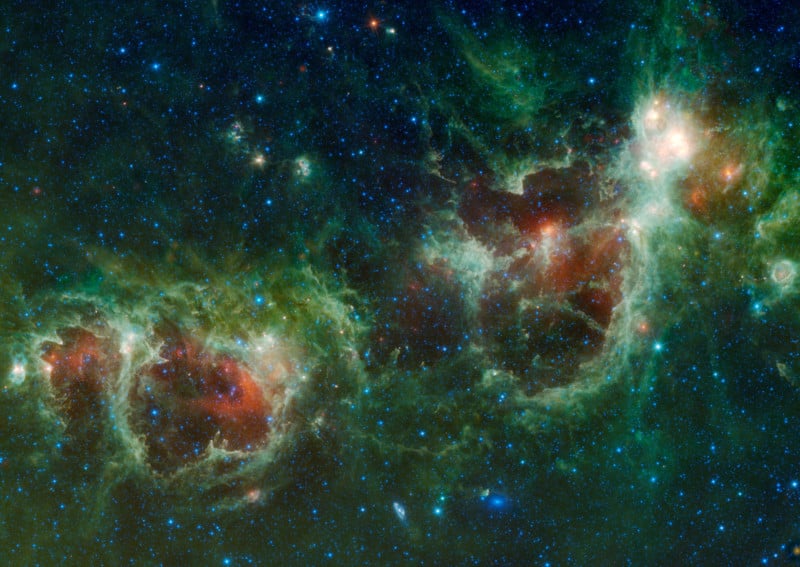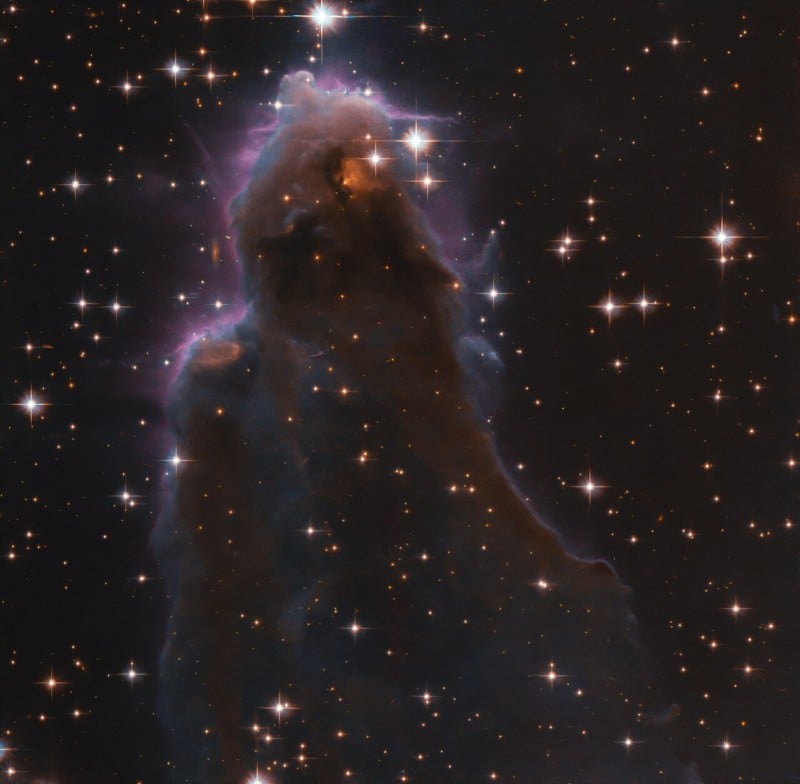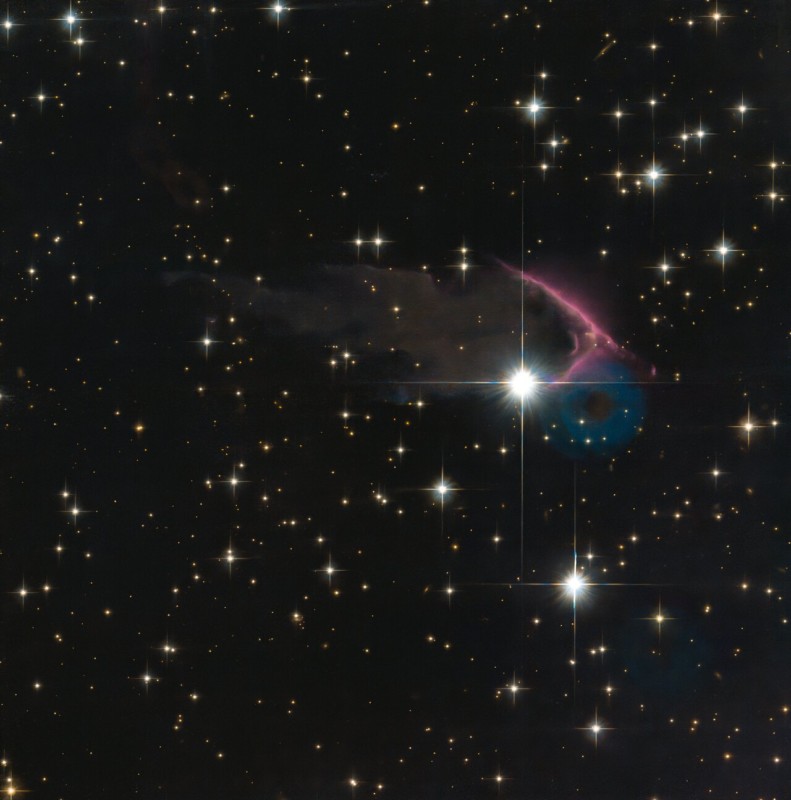Hubble Space Telescope Has Captured an Image of a Star Being Born
![]()
In just one relatively small “bulge” of the Soul Nebula (also known as Westerhout 5) in the constellation of Cassiopeia, the Hubble Space Telescope has captured an image of a star that is still being born.
The corner of the nebula cloud is about 7,500 light-years away and the small corner in question, called J025157.5+600606, depicts what is known as a FrEGGs – Free-Floating Evaporating Gaseous Globules. FrEGGs were only very recently discovered and require a specific set of conditions in order to occur.

According to a description on ScienceAlert, stars in these large clouds of stellar “nurseries” are formed from “cool clumps of dense molecular hydrogen that collapse under their own gravity.” As a result, these stars come into being “nestled in thick, molecular clouds.”
“When a very massive, hot star starts to shine, their intense ultraviolet radiation ionizes their birth cloud, creating a large, hot bubble of ionized gas called a Strömgren sphere,” ScienceAlert describes.
FrEGGs are the dense clumps of cooler gas that cluster around a Strömgren sphere and apparently many of these can continue to form stars of their own.

The boundary between the FrEGGs and the sphere is depicted in the image from the Hubble telescope as the glowing purple region. “Because the FrEGGs are so dense, this process doesn’t stop the star formation occurring inside. But it does, ultimately, hinder it, curtailing the gas supply that would feed the star forming within.” As a result, the stars born inside a FrEGGs are relatively low mass when compared to other stars.
These smaller lower mass, cooler temperature stars can actually last longer than the larger, hotter siblings. Some suggest this might be how our own star, often poetically referred to as Sol, was formed.
If you’re curious how photos like the ones here are constructed, it’s not as straightforward as you might think. The Hubble Space Telescope doesn’t capture full-color images, as described in a 2015 interview with CalTech scientist Robert Hurt.
“The main difference between normal astronomical data collection and earthbound photography is that astronomy is intrinsically monochromatic,” Hurt told Resource Magazine. “That image may be obtained through a filter, a detector, but we’re only getting back one channel of information at a time.”
The beautiful colors seen in the image of J025157.5+600606 were interpreted from the multi-channel infrared images sent back from Hubble by a trained scientist like Hurt.

Hubble captured the above image of anotehr FrEGGs earlier this year, also located in Cassiopeia. You can learn more about that image here.
Image Credits: ESA/Hubble